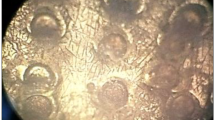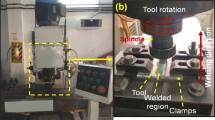Abstract
For applications like components of vehicle drives, e.g. drive shaft or motor shaft, the increasing amount of CO2 emission becomes a major challenge. Weight reduction of vehicle parts is one possibility to reduce CO2 emission. Therefore functionally adapted components must be designed in order to become smaller and lighter. Consequently monolithic material is not sufficient anymore, so there is a demand for tailored hybrid parts consisting of more than one material. Those tailored hybrid parts have to pass through a processing chain. There is the option of joining different materials in the hybrid part to meet the requirements. The discussed combination is a SAE1020-SAE5120 compound. Laser beam welding is an appropriate joining process due to its reduced heat influence, the resulting narrow welds and a low post-processing effort. Thus semi-finished products for the manufacturing of tailored hybrid shafts with graded properties can be produced efficiently. Further in the process chain there is the need for machining to reach an adequate level of accuracy of shape and dimension. Moreover the residual stress modification by the machining process has a deep impact on the lifespan of hybrid components. Therefore in this paper the machinability of the SAE1020-SAE5120 compound compared with a SAE1020-SAE1020 compound will be examined. The effect of cutting edge micro geometry on the surface and subsurface properties is analysed. Relationships between process forces, residual stresses and surface roughness are investigated. Metallographic cross sections and hardness measurements will show the connection between welded materials. The transition zone—the weld between the monomaterials—is the centre of attention for the investigations.









Similar content being viewed by others
References
Seffer O, Lahdo R, Springer A, Kaierle S (2014) Laser-GMA hybrid welding of API 5L X70 with 23 mm plate thickness using 16 kW disk laser and two GMA welding power sources. J Laser Appl 26 4:042005-1–042005-9
Lahdo R, Seffer O, Springer A, Kaierle S, Overmeyer L (2014) GMA-laser hybrid welding of high-strength fine-grain structural steel with an inductive preheating. Phys Proc 56:637–645
Suder W, Ganguly S, Williams S, Paradowska A, Colegrove P (2011) Comparison of joining efficiency and residual stresses in laser and laser hybrid welding. Sci Technol Weld Joi 16 3:244–248
Breidenstein Β (2011) Oberflächen und Randzonen hoch belasteter Bauteile. Habilitation, Leibniz Universität Hannover
Krektuleva RA, Cherepanov OI, Cherepanov RO (2016) Numerical investigation of residual thermal stresses in welded joints of heterogeneous steels with account of technological features of multi-pass welding. Appl Math Model 42:244–256
Capello E (2005) Residual stresses in turning Part I: influence of process parameters. J Mater Process Techno 160:221–228
Mohammadpour M, Razfar MR, Jalili Saffar R (2010) Numerical investigating the effect of machining parameters on residual stresses in orthogonal cutting. Simul Model Pract Theory 18:378–389
Pawade RS, Joshi SS, Brahmankar PK (2008) Effect of machining parameters and cutting edge geometry on surface integrity of high-speed turned Inconel 718. Int J Mach Tool Manu 48:15–28
Sadat AB, Bailey JA (1987) Residual stresses in turned AISI 4340 steel. Exp Mech 27 1:80–85
Thiele JD (1998) An investigation of surface generation mechanism for finish hard turning of AISI 52100 steel. M. S. thesis, The George W. Woodruff School of mechanical engineering, Georgia Institute of Technlogy, Atlanta, GA
Woite M GmbH (2012) Werkstoff-Nr. 1.0460. http://woite-edelstahl.info/10460de.html. Accessed 25 May 2018
Deutsche Edelstahlwerke Services GmbH (2011) Cr-Mn-legierter Einsatzstahl 1.7147/1.7149 20MnCr5/20MnCrS5. https://www.dew-stahl.com/fileadmin/files/dewstahl.com/documents/Publikationen/Werkstoffdatenblaetter/Baustahl/1.7147_1.7149_de.pdf. Accessed 25 May 2018
Denkena B, Reichstein M, Brodehl J, de León Garcia L (2005) Surface Preparation, coating and wear performance of geometrically defined cutting edges. Proc 5th Int Conf “The Coatings” Manuf Eng Key Eng Mater 438:1–7
Bragg WH, Bragg WL (1913) The reflection of X-rays by crystals. Proc R Soc A Math Phys Eng Sci 88(605):428–438
Breidenstein B, Denkena B, Prasanthan V (2016) Energy dispersive residual stress determination, 2. Internationale Konferenz: Euro hybrid –materials and structures, Kaiserslautern, 211–215
Breidenstein B, Denkena B, Mörke T, Prasanthan V (2017) Non-destructive determination of residual stress depth profiles of hybrid components by energy dispersive residual stress measurement. Key Eng Mater 742:613–620
Klaus M (2009) Röntgendiffraktometrische Ermittlung tiefenabhängiger Eigenspannungsverteilungen in Dünnschichtsystemen mit komplexen Aufbau. Dissertation, Technische Universität Berlin
Attanasio A, Gelfi M, Pola A, Ceretti E, Giardini C (2013) Influence of material microstructures in micromilling of Ti6Al4V alloy. Materials 9 6:4268–4283
Acknowledgements
The results presented in this paper were obtained from the Collaborative Research Centre 1153 “Process chain to produce hybrid high performance components with Tailored Forming” in subprojects A3 and B4. The authors thank the German Research Foundation (DFG) for the financial support of this project.
Author information
Authors and Affiliations
Corresponding author
Rights and permissions
About this article
Cite this article
Denkena, B., Breidenstein, B., Grove, T. et al. Surface integrity of turned laser-welded hybrid shafts. Prod. Eng. Res. Devel. 13, 79–87 (2019). https://doi.org/10.1007/s11740-018-0862-8
Received:
Accepted:
Published:
Issue Date:
DOI: https://doi.org/10.1007/s11740-018-0862-8




